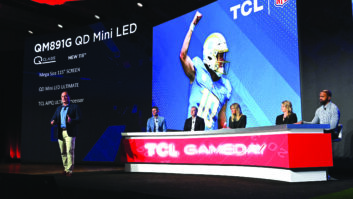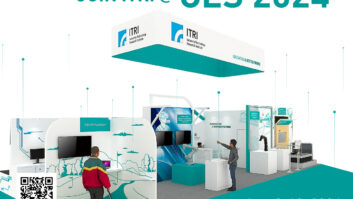NEW YORK — Dealers will find new brands entering the smartphone and smartwatch markets at International CES, where some vendors will expand their tablet selections despite peaking sales.
New cellular signal boosters for home and car applications will also debut.
Many of the first-time smartphone and smart watch suppliers will target the value segments, with new budget smartphones priced to appeal to consumes wanting to take advantage of carriers’ no-phone-subsidy programs.
The launches come as tablet growth is slowing markedly and smartphone growth is poised to accelerate because of intensifying carrier competition and new carrier trade-up programs.
In the tablet market, early expectations that consumers would regularly update tablets as frequently as smartphones – every two to three years – hasn’t panned out. “What has played out instead is that many tablet owners are holding onto their devices for more than three years and in some instances more than four years,” said Ryan Reith, program director of IDC’s Worldwide Quarterly Mobile Device Trackers. Two major drivers of that trend are legacy software support for older products, especially within iOS, and the increased use of big-screen smartphones for multiple computing tasks, he said.
Tablets have already achieved remarkable penetrations rates, other analysts add, and they’re getting more competition is coming from entry-level “Bing books” at under $250, Chromebooks and the 2-in-one segment, analysts said.
Digital Technology Consulting (DTC) projects U.S. tablet shipment growth at 9.7 percent in 2015 and 7.4 percent in 2016. Futuresource thinks U.S. tablet sales are already near their plateau, reporting 77 million units sold in 2014 and forecast shipment growth of less than 2 percent to 78 million in 2015 and no growth in 2016.
The average price of Android tablets has fallen 53 percent since 2011 to $140, according to Futuresource, thanks mainly to a supplier land rush. DTC sees more than 75 tablet brands in the U.S. Though a half dozen or so major brands still make up more than two-thirds of the market, “the explosion of second- and third-tier Android tablets…will continue to chip away at their market shares,” said DTC’s Myra Moore. The increasing number of no-name brands selling at impulse prices provide little room for retailer profit.
So-called 2-in-1 models haven’t yet caught consumers’ fancy. IDC said these detachable models made up just 4 percent of tablets sold in 2014. “A large reason for the relatively small uptake has been consumer hesitancy around the Windows 8 platform, which the majority of 2-in-1 devices are built upon,” IDC said.
In the smartphone market, IDC projects North American unit shipments to grow 9.8 percent in 2014 to 160.6 million, down from 2013’s 12.5 percent and 2012’s 14.7 percent. Frost and Sullivan forecasts 18.3 percent smartphone growth in North America in 2014, down from 2013’s 29 percent.
Increased carrier competition and new carrier trade-in programs, however, could accelerate growth rates, marketers and analysts said.
“Carriers’ installment/trade-up plans are accelerating the smartphone-replacement cycle from its traditional 24 months to as soon as 12-18 months,” said Bashar Nejdawi, president of Ingram Micro Mobility in North America. In addition, device-renting programs “allow consumers to use and retire devices at a faster rate.”
The increased level of competition among the carriers, and the resulting lower subscription charges, said NPD
Added Stephen Baker, NPD’s VP of industry analysis, “A renewed level of competition between the carriers, lower entry pricing to get consumers into smartphones and plans that enable faster upgrades are a catalyst” for sales growth.
In smart watches, many vendors are lining up with their own proprietary OSs to compete in a market whose 2015 U.S. shipments are forecast by Strategy Analytics to grow 291 percent to 8.8 million units from last year’s 2.3 million as the devices take on increased functionality through downloadable apps.












